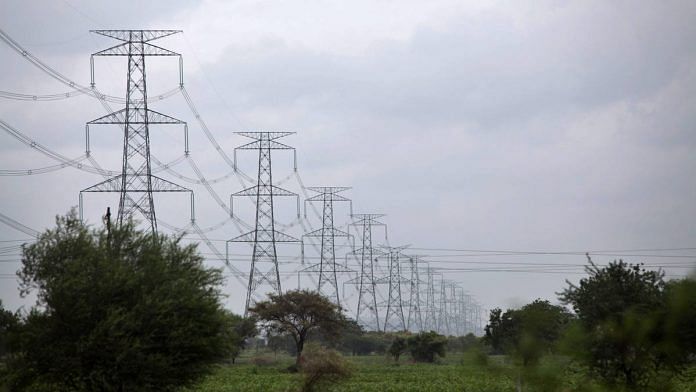New Delhi: The Ministry of Power has written a sternly-worded letter to all State Electricity Regulatory Commissions (SERCs), pulling them up for creating prohibited ‘regulatory assets’, and tasking them with concrete plans for the liquidation of these assets within 30 days.
A regulatory asset, which is prohibited under the law except under ‘exceptional circumstances’, is created when state regulators defer costs incurred by them to be recovered through future hikes in electricity tariffs.
Put simply, SERCs periodically recognise that there are certain costs run up by distribution companies (discoms) that may not be made up for by the tariffs the discoms charge consumers.
However, since hiking electricity rates is a politically sensitive issue, the SERCs instead keep deferring these costs. These deferred costs are called regulatory assets.
According to a media report, regulatory assets of discoms have cumulatively risen to Rs 88,720 crore as of 30 June, 2022.
The Tariff Policy 2016 takes a dim view of the creation of such regulatory assets, saying that these should only be done “as a very rare exception in case of natural calamity or force majeure conditions”.
“Under business-as-usual conditions, no creation of Regulatory Assets shall be allowed,” says the Tariff Policy 2016. “Recovery of outstanding Regulatory Assets along with carrying cost of Regulatory Assets should be time bound and within a period not exceeding seven years. The State Commission may specify the trajectory for the same.”
In its letter dated 11 November, reviewed by ThePrint, the Ministry of Power has noted that “large Regulatory Assets have been created by some Commissions, without specifying the mandatory trajectory for recovery of such Regulatory Assets.”
“This is in contravention of the law,” the letter added. “The State Commissions are required to comply with the provisions of the Electricity Act, 2003 and the Tariff Policy and lay down a trajectory for recovery of Regulatory Assets along with carrying costs. The State Commissions should also ensure that no fresh Regulatory Assets are created.”
The creation of regulatory assets is a problem even the Niti Aayog has raised. In a report jointly brought out with the RMI (Rocky Mountain Institute) India in August 2021, the Niti Aayog had warned that the magnitude of regulator assets could create a “tariff shock” in the future.
“Mounting regulatory assets create cash-flow problems for discoms, forcing them to borrow funds to cover the revenue deficit,” the report said. “The additional borrowing, coupled with the interest, adds to the burden of discoms.”
Meanwhile, the Power Ministry said the State Commissions should ensure that the provisions of the Electricity Act and the Tariff Policy are implemented. Any “willful violations” of the law by States would come under the ambit of Section 90 (2) (0) of the Electricity Act, which deals with the removal of Members of the State Commissions, it said.
“For the financial viability of the Distribution licensees and the whole power sector, it is essential that the Regulatory Assets are liquidated at the earliest,” the letter concluded. “It is requested that the latest status of Regulatory Assets and the plan for liquidation of the same may be submitted to this Ministry within 30 days.”
The finances of the power sector are a matter of concern for the Centre, with even Prime Minister Narendra Modi urging the states in July to clear dues of Rs 2.5 lakh crore to discoms. The financial problems being faced by the power utilities were “not a matter of ‘Rajniti‘ (politics) but pertains to ‘Rashtra Niti‘ and nation building”, he asserted.
(Edited by V. S. Chandrasekar)
Also Read: Adani, GMR, L&T and IntelliSmart bid for prepaid smart meter tenders worth Rs 23,000 cr in UP



